The Somme: In Search of a Name
I was in Toulouse on the 23rd June 2016, learning a little French at Alliance Française. When I woke up on the morning of the 24th June I found I was no longer European, but English. I felt that someone had stolen my birthright. Brexit felt like an exile and its consequence led me on a journey.
A friend, a Benedictine nun in the Haute Garonne, had taken a great interest in my name – Nigelle de Visme. I knew almost nothing about my name; born in London and brought up in Australia from the age of eleven without my father; my French inheritance had long remained a mystery. I am now 70.
Soon batches of information flew into my inbox from the Sisters that revealed an entire village – le Village de Vismes – in Picardie. Theobold de Vismes in 1045, so I learned, was a chevalier to William the Conqueror, had married a Norwegian princess by the name of Radegonde; the name and the village go back beyond Charlemagne.
I learned that Vismes is an ancient Catholic name, but during the persecutions in the 16th century certain members of the family escaped to become Huguenot and abandoned the final ‘s’. It became a silent code, as it were, to define one’s religious allegiance. In modern times my grandfather had been Pasteur of the Swiss Church in London for 28 years and my grandmother, Suzanne de Visme, founded its Sunday School. They both died when my father was a child.
On the night I returned from Toulouse after Brexit I switched on BBC 4 to see a documentary of the war poets of the Somme, poems I had loved in my teens. In my own shock at no longer being European, the centennial significance bypassed me. A friend visited me the following day, I will call her Petunia. She feels exactly about Brexit as I do. Petunia has taught French for 40 years and, as we sat commiserating over good French coffee, we hatched a plan. We would hop into my 25-year-old and fairly well battered Nissan Micra and hop over to le Village de Vismes in Picardie where I would inquire about political asylum. A few days later, picnic hamper packed, we were poised for an adventure.
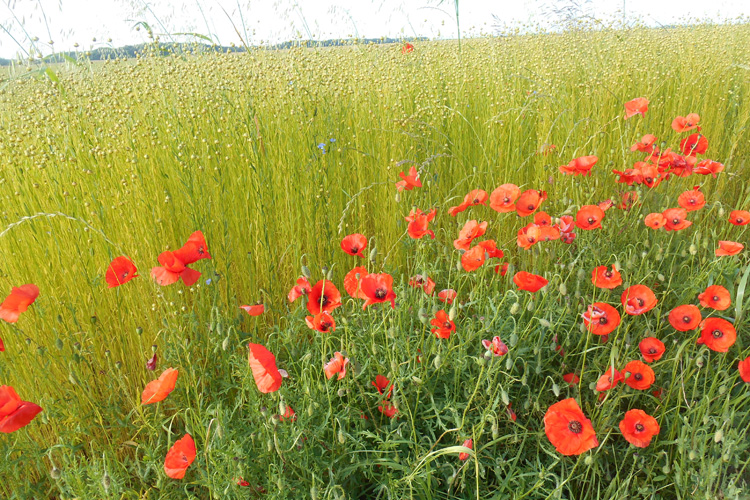
Poppies of the Somme, photo: Nigelle de Visme
I was a bit apprehensive, frankly, about driving the car further afield than the Bath Park and Ride so I took it to my garage mechanic who patted her bonnet and said, in broad Somerset: arr, she’d take ‘ee to New Zealand. This tacit blessing of the old car’s reliability, despite (I cringe at the confession) it not having had a service for eight years, encouraged my determination. I accepted a loan of the regulation warning triangle while black tape was positioned on the headlights to guide the beam to the left – or was the right? Thus prepared, Petunia and I drove off to Newhaven to catch the ferry to Dieppe on the 14th of July. Curiously, neither of us lovers of all things French registered until later the significance of the date that we had chosen to embark on our little pilgrimage.
The countryside was at her very best that day as we drove the A303 and then the A34 south to link with the A31 and drive along the Hogsback to pause in Puttenham where we admired the gorgeous art nouveau, Byzantine style, Watts Memorial Chapel designed and built by a remarkable woman, Mary Watts, together with the local village women of Compton. This hidden jewel of England is worth every detour to see. Leaving that magical moment we swung left at Shalford to enjoy lunch with old friends of mine before cruising on to Newhaven, an easily negotiable port, for an easy crossing.
We had booked a chambre d’hôte a few kilometres out of Dieppe for our first night in France but by the time we had disembarked the night was pitch. We knew that Les Champarts, un havre de paix, was somewhere in the middle of a field to the left of a forest … and no, of course my car doesn’t have a satnav…
Petunia phoned for directions. Reach Glicourt, we were told, and follow the signs of chambres d’hôtes across the fields. But Glicourt didn’t feature on any signpost or on my maps. At a tiny roundabout I stopped, helpless. I had no idea where to go on this unlit road on this blackest of nights and so far we had not seen another car.
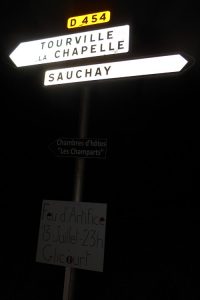
Road sign, photo: Nigelle de Visme
Suddenly, headlights behind us. I fairly flew out of my car, flagged down the approaching vehicle and a young couple, seeing the English number plate in their lightbeam, asked me in perfect English if we were lost! Imagine that!
They knew the village of Glicourt, confirmed it was not signposted along this road, but if I turned around and drove back to Sauchay and followed that sign we would reach the mystery. And so we did, to find chambres d’hotes signs directing us through the fields to the haven of peace. In dim light we made our way quietly upstairs. We had been told the front door would be unlocked, to let ourselves in, our room was upstairs on the right.
The following morning we woke to bright sunshine. At breakfast we feasted on our hostess’s home-made conserves, the host’s home baked brioche and baguette, cheeses from the local farm, fresh apple compote and knew all was well with the world. Except that it wasn’t. We had sailed and landed on the 14th July. News at breakfast stunned us – Nice.
We left on a sombre note, drove past fields dazzling us with the brightness of poppies illuminated in the morning light. They were same colour as my car. Their brilliance demanded we stop frequently to admire their simple brave glory in field after field of flax, wheat, barley, grass. Petunia picked a posy; we kept it on the dashboard in a picnic cup of water next to my faded icon of the Virgin Mary throughout the pilgrimage, a mobile altar of sorts.
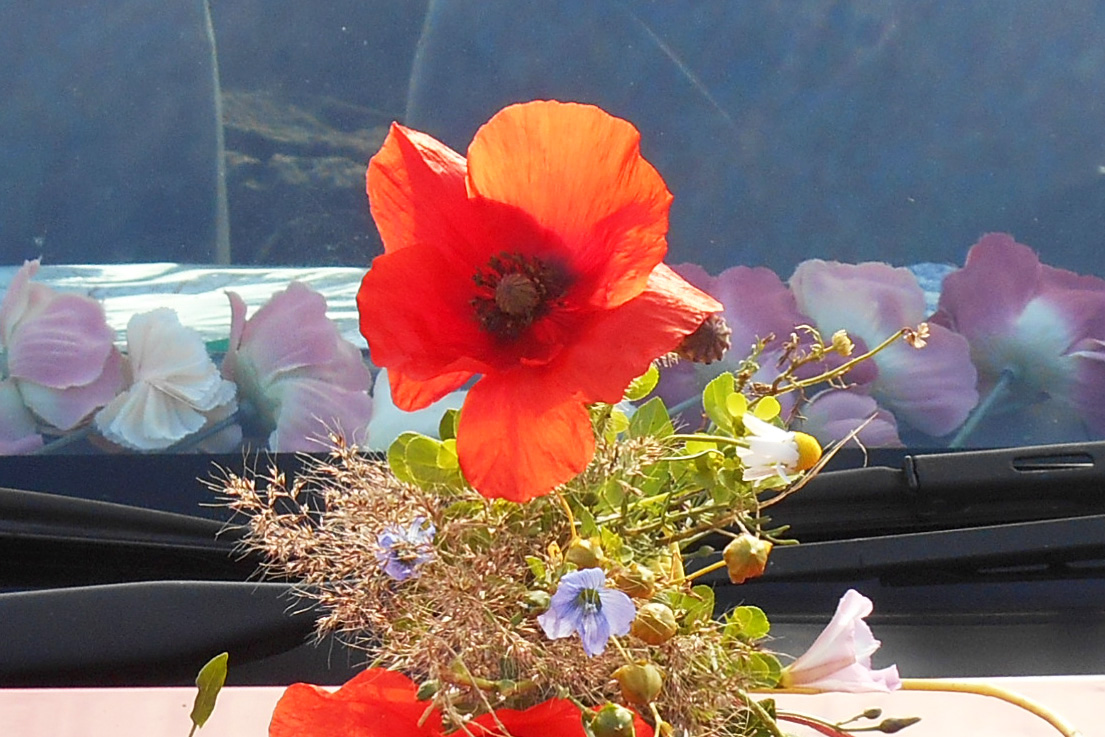
A mobile altar, photo: Nigelle de Visme
In due time we came to le Village de Vismes, a pretty hamlet of a few hundred people with not a de Visme nor a de Vismes still living there. We met the mayor who came from his potato fields to meet us. He told us of a recent reunion of de Vismes who had come from all over France – doubled the population of the village! He smiled – and gave me photocopies with the coordinator’s address. Petunia asked if there were de Visme/s graves in the village cemetery and Monsieur Plé said no, there weren’t, but there were five war graves of five English soldiers buried there who were shot down in 1916. We didn’t go to the graves then for it was national holidays and accommodation was proving hard to find at such short notice; we had to move on.
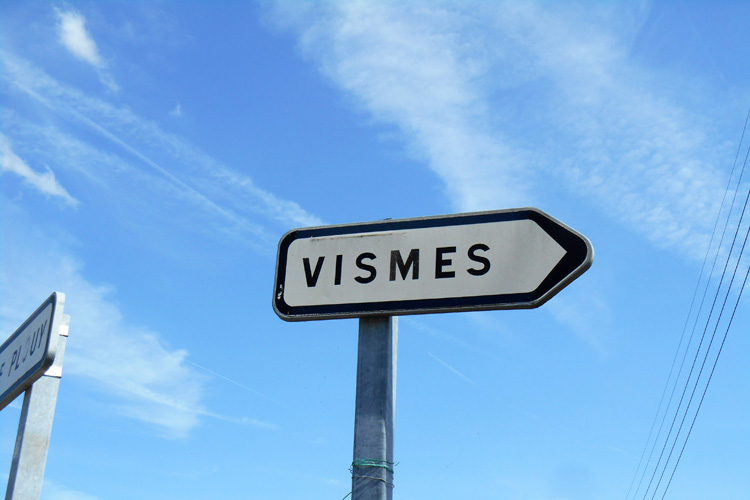
Vismes, photo: Nigelle de Visme
To-ing and fro-ing we found a night’s accommodation here and a night’s accommodation there and each place gave us a story, an encounter, some poignant, some pleasure. Poppies filled the fields wherever we went and my valiant little red Micra acquired her name, Poppy.
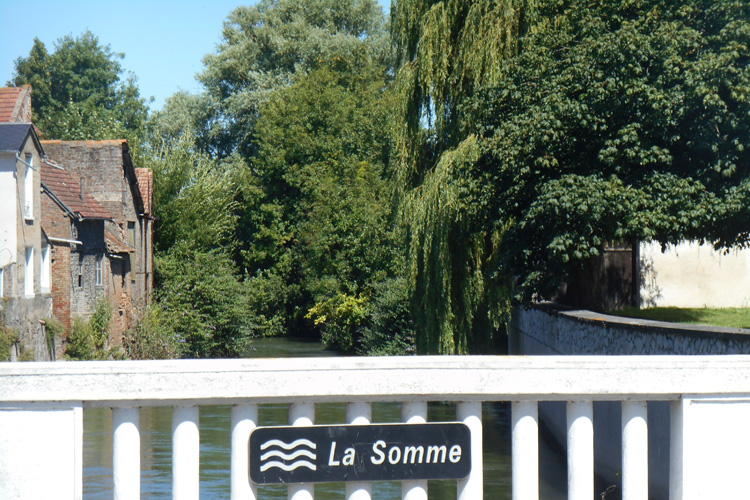
Crossing the River Somme, photo: Nigelle de Visme
It was when we came to Abbeville that we crossed a bridge both physical and metaphorical; we had crossed the river – Somme. We walked along the main street, drawn by the soaring filigree stone façade we could see ahead of us over the plain buildings of the shops lining the road. Coming into the main square we stood in awe at the Collegiate Church of Abbeville, the lacy beauty of its pearl white stone façade took our breath away. That façade was all that remained of the entire city of Abbeville.
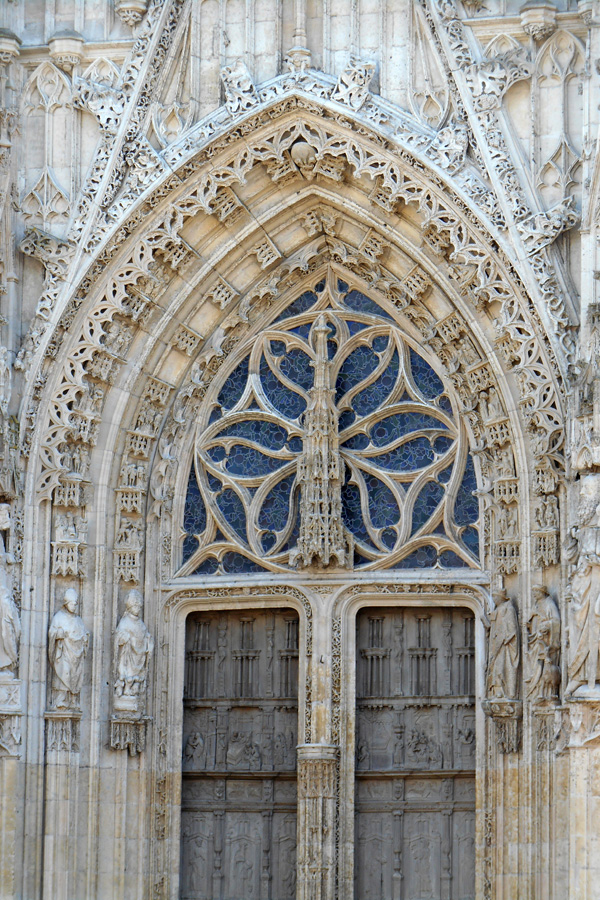
Facade of Abbeville, photo: Nigelle de Visme
We had planned to visit the Cathedral of Amiens. A short train ride was an easier option than driving; it was a fortuitous choice. As we stepped out onto the vast railway concourse we stood momentarily bemused at the huge word THANKS all along the left wall. Glancing right was the word MERCI. We descended the steps to gaze up at the letters each of which was separated by an enormous sepia photograph of: war, trenches, soldiers, horses, bombed villages, tanks. No one walking on that concourse spoke. Separately we each studied the photos, the meaning, the intention, the reminder – this was the Somme. I looked down at my feet. There were long strips of coloured photo images of blue sky, cotton-wool clouds – and falling poppies.
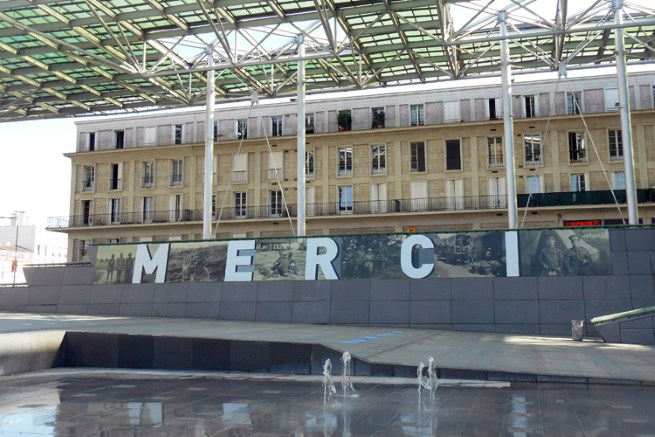
Amiens, MERCI, photo: Nigelle de Visme
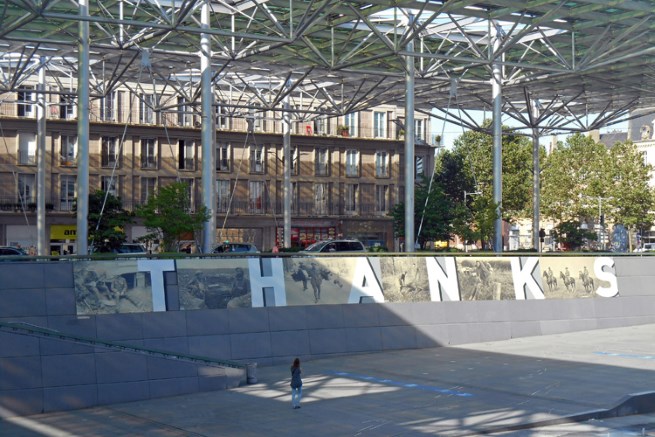
Amiens, THANKS, photo: Nigelle de Visme
Petunia turned towards me, tears had armisticed our faces. We had slipped back 100 years. The interior of the Cathedral of Amiens had been sandbagged during the war years, most of it miraculously saved. Countless ANZACS ‘adopted’ the famous Weeping Angel as their spiritual point d’appui, against the whole useless horror of war. That horror gave rise to the vision of a united Europe and now, 100 years later, our own people had destroyed the vision of that unity by voting Brexit.
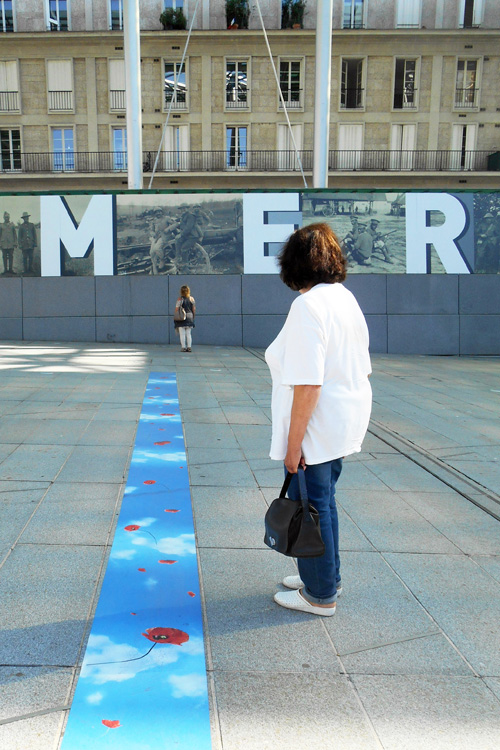
Memorial in Amiens, photo: Nigelle de Visme
Some days later we returned to the tiny village cemetery of Vismes to honour the five soldiers who had never left it. Villagers have been tending those graves for 100 years; the headstones gleamed in the sun, a poppy set by each:
- M2/032195 Private J. Munro, Royal Army Service Corps, 19th November 1916, aged 22
- 37695 Private J. Taylor, Lancashire Fusiliers, 6th November 1916
- 1975 C Sergeant Major W.T. Kerns, M.M. Lancashire Fusiliers, 4th November, aged 27
- 28165 Lance Corporal H. Smethurst, Lancashire Fusiliers, 4th November 1916
- 37140 Private W.J. Pye, Lancashire Fusiliers, 4th November 1916
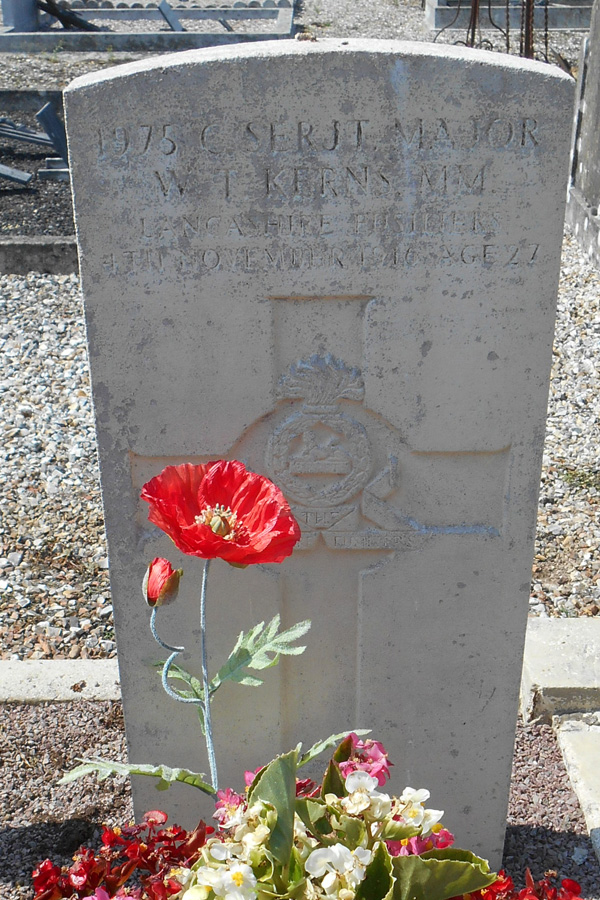
Sergeant-Major W.T. Kerns, M.M. Lancashire Fusiliers, photo: Nigelle de Visme
I took photos in order to identify the young men aged between 22 and the oldest, 27. But who is there now to tell the families that their loved ones are remembered in le Village de Vismes?
We are the Dead. Short days ago
We lived, felt dawn, saw sunset glow,
Loved and were loved, and now we lie
Where poppies blow …*
We will remember them.
* In Flanders Fields by John McCrae, a Canadian doctor who fought at Ypres where the Germans launched the first chemical attack in the history of war. McCrae performed the burial service of a friend, a fellow soldier, at which time he noted how poppies quickly grew around the graves of those who died at Ypres. The next day, he composed his poem while sitting in the back of an ambulance.
Share to: Facebook Twitter LinkedIn Email
Leave a reply
Your email address will not be published. Required fields are marked *

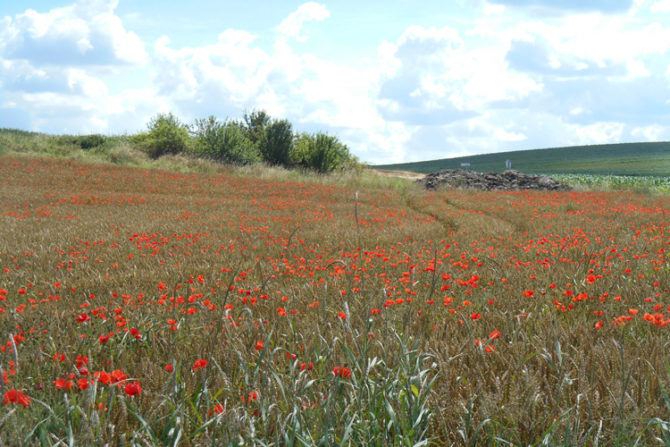


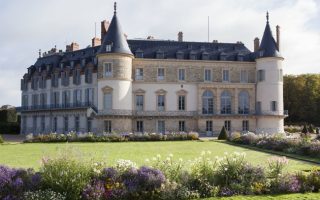

REPLY